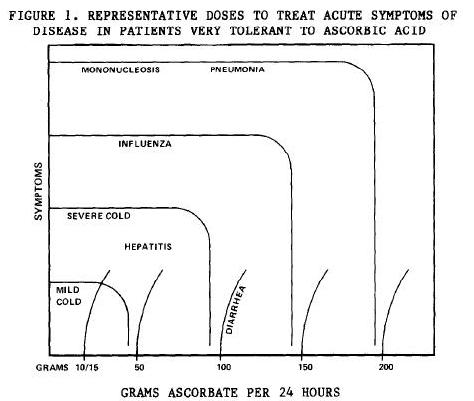Abby asked for suggestions to accelerate healing of her injuries. What should be done when a wound won’t heal?
More often than not, I think, slow healing wounds reflect nutritional deficiencies. Tissue regeneration is a nutrient-intensive process, and a lack of nutrients can radically slow it down.
Osteoporosis Epidemic Indicates a Widespread Deficiency of Bone Nutrients
Tissues are not static: they are constantly broken down and regenerated. So just maintaining tissues requires a steady supply of nutrients.
Bone is particularly in need of certain nutrients: vitamins C, D, and K2; magnesium; and others. Unfortunately, the nutrients needed by bone are precisely the ones in which Americans are most deficient.
I believe that deficiencies in these nutrients are the main cause of the osteoporosis epidemic. Take vitamin K2. Most Americans are deficient in vitamin K2, which is needed for bone calcification. Non-vertebral fractures are five-fold more common in people with vitamin K2 deficiency. [1] The rise in fracture rate in women after menopause may be due to the fact that estrogen improves vitamin K2 status. [2]
Vitamin D is another nutrient critical for bone health. Bone mineral density peaks in the range 32 to 45 ng/ml. [3]
Vitamin C is a third nutrient necessary for bone health. Vitamin C is needed for collagen to form a meshwork that can then be mineralized by calcium, magnesium and other minerals. In the absence of vitamin C, bone is malformed.
Interestingly, cow’s milk has only one-fifth the vitamin C of human breast milk, and vitamin C is destroyed during pasteurization, so formula-fed babies before the days of vitamin C supplementation were prone to scurvy. Some believe that vitamin C and vitamin D deficiencies, not malicious parents, are responsible for “Shaken Baby Syndrome.” [4,5]
Vitamin Levels Determine the Success of Orthopedic Surgery
Today I read a press release about a study that found that 40% of all patients arriving for orthopedic surgery, and 52% of those coming in for trauma service, were deficient in vitamin D. Deficiency was defined as 25(OH)D levels below 20 ng/ml.
(We recommend keeping 25(OH)D between 35 and 50 ng/ml.)
What happened? Those who had surgery with vitamin D deficiency failed to heal properly, while those who were vitamin D sufficient generally did well. Concluded the doctors:
“In the perfect world, test levels, fix and then operate,” said Joseph Lane, M.D., professor of Orthopedic Surgery and chief of the Metabolic Bone Disease Service at HSS, who led the study. “If you put people on 2,000-4,000 [milligrams] of vitamin D based on what their deficient value was, you can usually get them corrected in four to six weeks, which is when you are really going to need the vitamin D. If you are really aggressive right before surgery, you can correct deficient levels quickly, but you have to correct it, measure it, and then act on it.”
According to Dr. Lane, bone remodeling or bone tissue formation, a part of the healing process, occurs about two to four weeks after surgery. This is the critical stage when your body needs vitamin D….
“With arthroplasty, there is a certain number of patients that when you put in the prothesis, it breaks the bone adjacent to the protheses, which can really debilitate patients.” This could be prevented or minimized by rectifying vitamin D levels. Dr. Lane also explained that they now perform procedures where they grow a bone into a prosthesis without using cement. “In those people, it would be an advantage to have adequate vitamin D, because it matures the bone as it grows in, it is really healing into the prosthesis,” he said.
“The take home message is that low vitamin D has an implication in terms of muscle and fracture healing, it occurs in about 50 percent of people coming in for orthopedic surgery, and it is eminently correctable,” Dr. Lane said. “We recommend that people undergoing a procedure that involves the bone or the muscle should correct their vitamin D if they want to have an earlier faster, better, result. What we are saying is ‘wake up guys, smell the coffee; half of your patients have a problem, measure it, and if they are low, then fix it.'” [6]
Conclusion
If you have any sort of injury, make sure you are well nourished.
If an injury refuses to heal, consider it a red flag: you are probably missing one or more crucial micronutrients. Take steps to identify the deficiencies and remedy them as quickly as possible.
References
[1] Cockayne S et al. Vitamin K and the prevention of fractures: systematic review and meta-analysis of randomized controlled trials. Arch Intern Med. 2006 Jun 26;166(12):1256-61. http://pmid.us/16801507
[2] Shea MK et al. Genetic and non-genetic correlates of vitamins K and D. Eur J Clin Nutr. 2009 Apr;63(4):458-64. http://pmid.us/18030310.
[3] Bischoff-Ferrari HA et al. Positive association between 25-hydroxy vitamin D levels and bone mineral density: a population-based study of younger and older adults. Am J Med. 2004 May 1;116(9):634-9. http://pmid.us/15093761.
[4] http://legaljustice4john.com/scurvySigns.htm.
[6] Hospital for Special Surgery (2010, October 7). Vitamin D deficiency rampant in patients undergoing orthopedic surgery, damaging patient recovery. ScienceDaily. October 7, 2010, http://www.sciencedaily.com/releases/2010/10/101006141556.htm. Journal citation: L. Bogunovic, A. D. Kim, B. S. Beamer, J. Nguyen, J. M. Lane. Hypovitaminosis D in Patients Scheduled to Undergo Orthopaedic Surgery: A Single-Center Analysis. The Journal of Bone and Joint Surgery, 2010; 92 (13): 2300 DOI: 10.2106/JBJS.I.01231.












Recent Comments